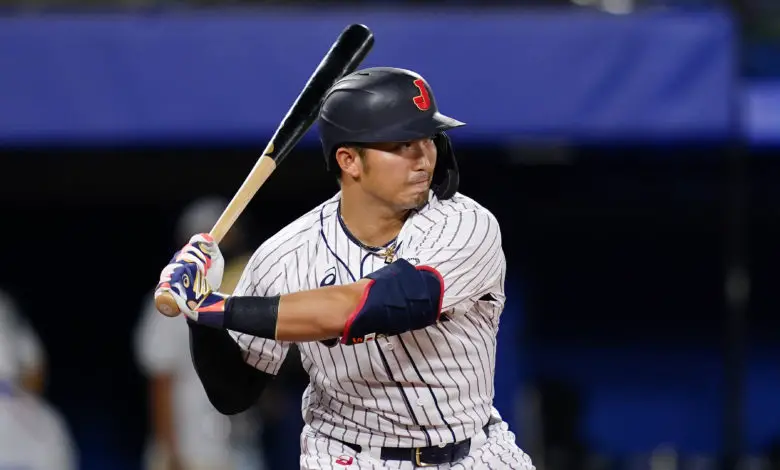
Japanese OF Seiya Suzuki Would Be Great Fit for Cubs if Posted
According to a report from Yahoo Japan, the Hiroshima Carp have begun taking steps toward making outfielder Seiya Suzuki available to MLB teams this winter via the posting system. That includes updating his medical records with an MRI and completing other necessary paperwork, though there’s no guarantee he’ll actually be posted.
Similar reports pop up every year around this time and many of them generate very little interest even if they end up coming to fruition, but Suzuki is a different case in that he’s a very balanced athlete who’s only 27 years old. Because NPB requires nine full years of service time in order to reach free agency, many teams won’t post players until they’re past their prime seasons. Shogo Akiyama, who I wanted the Cubs to target and who’s been a disappointment in Cincinnati, was posted prior to his age-32 season.
Suzuki is also a different kind of hitter from Yoshi Tsutsugo, who came to MLB at age 29 with a significant amount of swing and miss in his game. There’s much less risk with Suzuki, who is considered a five-tool player with a very patient plate approach, speed, and a plus arm. Add in the high contact rate and he sounds like a perfect fit for the Cubs.
big news. many pacific rim ML scouts have considered Suzuki as the top player in Asia that could come over in near future
as far as hitting goes, he's as low risk as it could get among Asia-area positional players. not only that, he's an athlete that can run & has a plus arm. https://t.co/zncQDTftPJ
— Sung Min Kim ⚾️ (@sungmin_kim_) October 22, 2021
Over the last three seasons, Suzuki has hit 91 homers with 82 doubles and has walked 20 more times (260) than he’s struck out (240). He started playing professionally at the age of 18, at which point he was almost eight years younger than the average Japan Western League player and nearly 12 years younger than the average Central Leaguer. At 26 this season, he was still more than two years younger than the Central League average.
His .310/.402/.542 slash line is impressive and the combination of patience and gap power should translate well to MLB even if the average and home run numbers dip a bit. He can almost certainly hold down a corner spot for just about any team in need of outfield help, which is where we get to the Cubs and why the fit would be so good.
It’s become all too clear at this point that Jason Heyward can’t be relied upon as an everyday producer in the lineup, and his defense has fallen off in recent years as well. Assuming Rafael Ortega is back next season and Ian Happ is indeed tendered a contract, the Cubs’ three primary outfielders would be left-handed batters a vast majority of the time (Happ would obviously turn around against lefties). The righty-batting Suzuki would give them better balance with more of the contact-based approach they should be trying to add to the roster.
Aside from his fit as a player, there are two more procedural facets that should have the Cubs targeting Suzuki. The first is the revised posting system that no longer requires a massive up-front bid in order to secure negotiating rights with a player. All 30 teams can work freely with Suzuki and his reps, after which the team that signs him would pay a fee to his NPB team that is tied to the amount of his contract.
That fee is 20% of the contract’s first $25 million, then 17.5% of the next $25 million, and 15% of anything above that (including performance bonuses). So if Suzuki signed a deal worth $75 million, his new MLB team would pay the Carp $13.125 million on top of those base contractual obligations. That might seem like a lot of “dead-weight loss” for Tom Ricketts, who has lamented such frivolous spending in the past, but it’s probably more amenable to the front office than giving up draft picks.
The Cubs have to add several players this winter and they’ve got money to spend, but the second aspect of Suzuki’s attractiveness is that he doesn’t have a qualifying offer attached. This winter will probably see a record number of QOs extended and declined, which means the market will be flooded with players whose value is impacted by the loss of draft picks and international bonus money.
It would be one thing if we were just talking about elite-level players, but there could be several others who would otherwise be in the Cubs’ wheelhouse were it not for the QO penalties being a non-starter. Consider that the Cubs, who did not exceed the luxury tax in 2021, would lose their second-highest selection in the 2022 draft as well as $500,000 from their international bonus pool for signing a player who rejected a QO. Signing two such players would cost them their third-highest remaining pick as well.
Given the direction of the franchise and the hiring of Carter Hawkins as a development-minded GM, it’s hard to imagine the front office prioritizing immediate impact over those long-term losses. That could mean waving goodbye to the idea of bringing Nick Castellanos back, since opting out of his Reds deal would mean Cincy can and should slap a QO on him. However, he could be among the few exceptions when it comes to players for whom the Cubs might be willing to make some sacrifices.
When you weigh all the different factors, Suzuki just keeps looking better. Now it may just be a matter of convincing him that Chicago is where he wants to come play. The Cubs weren’t able to do that with Shohei Ohtani, who strongly preferred the West Coast, but perhaps they can sell a vision that isn’t yet clear to anyone outside the team offices.

